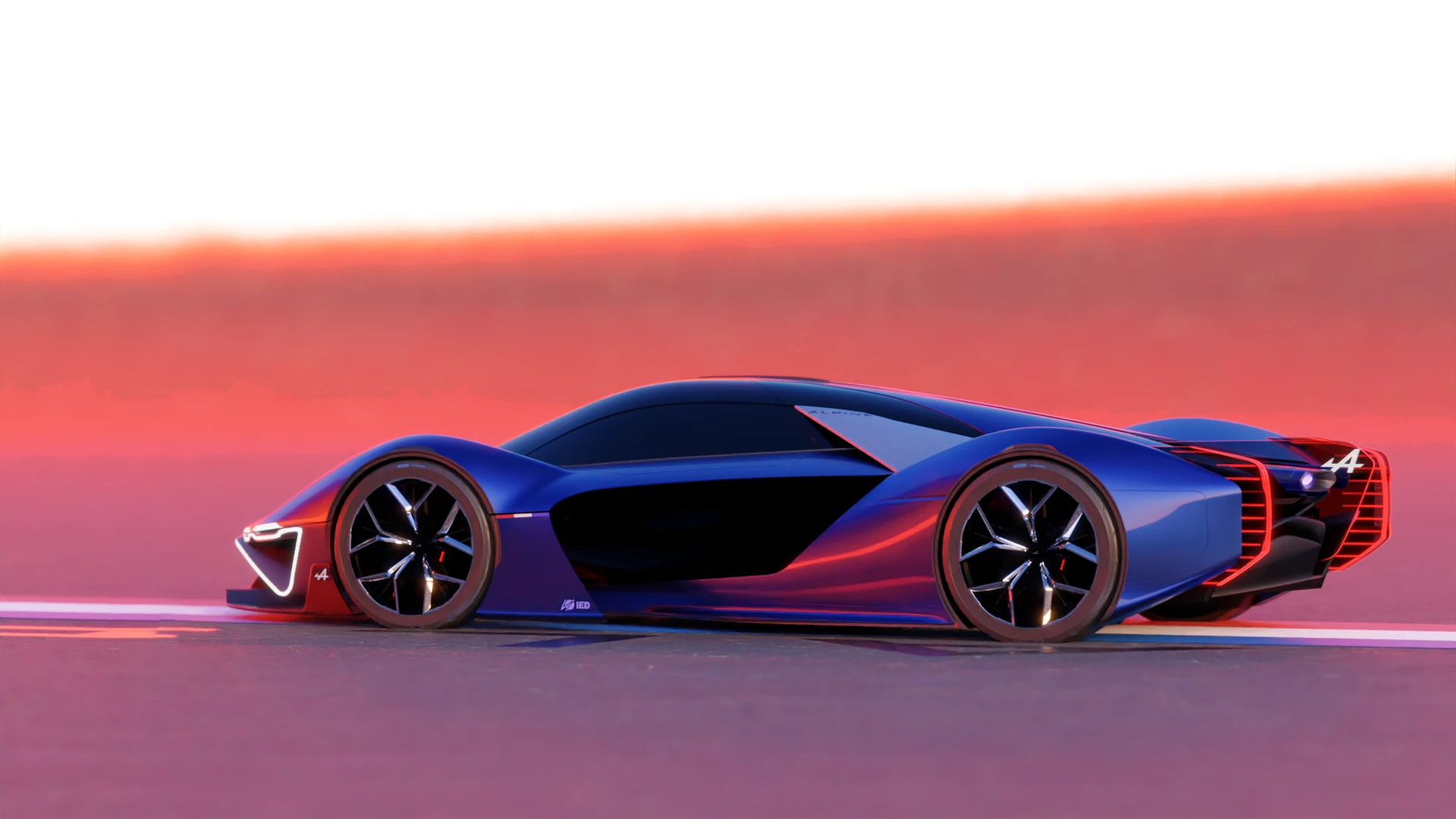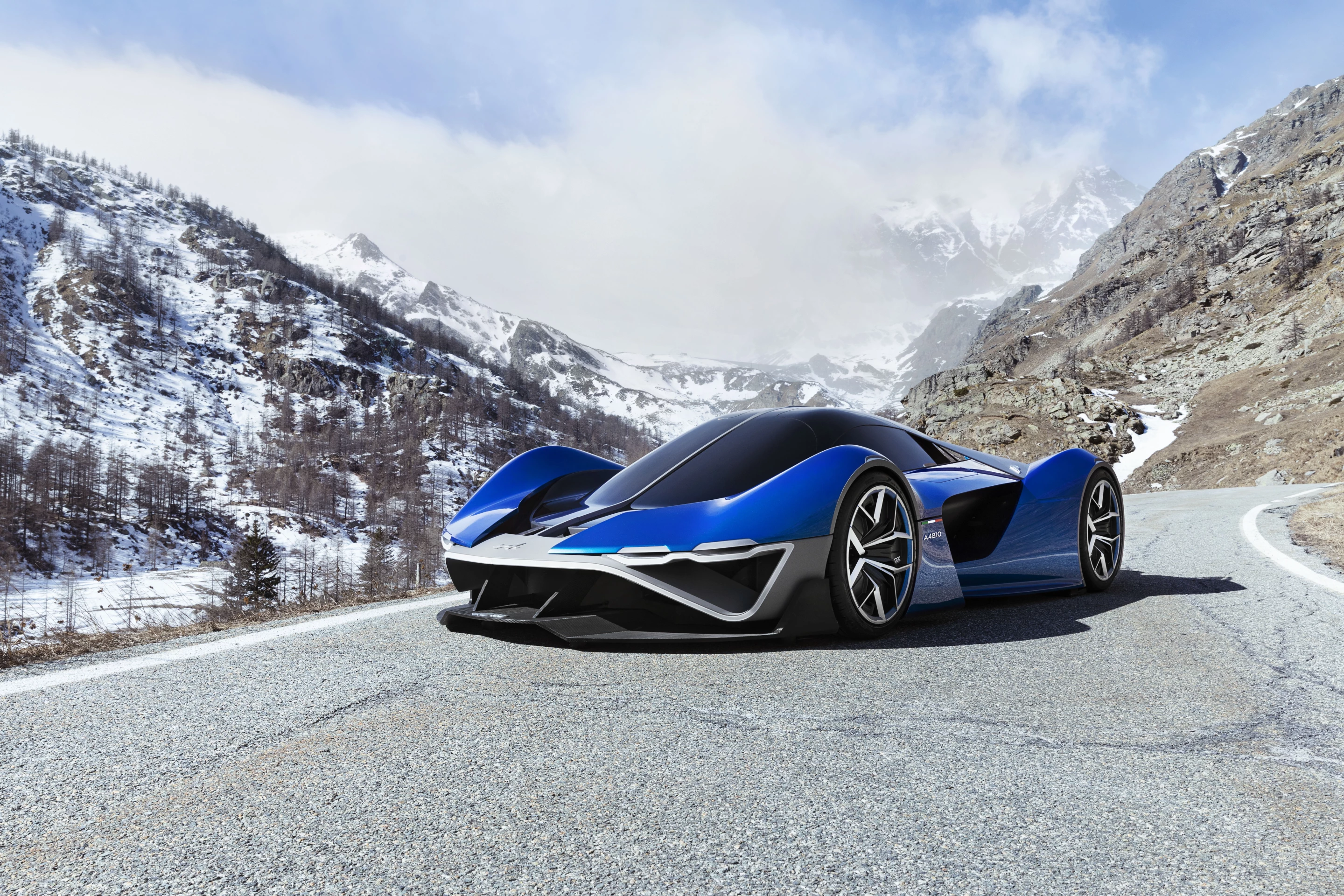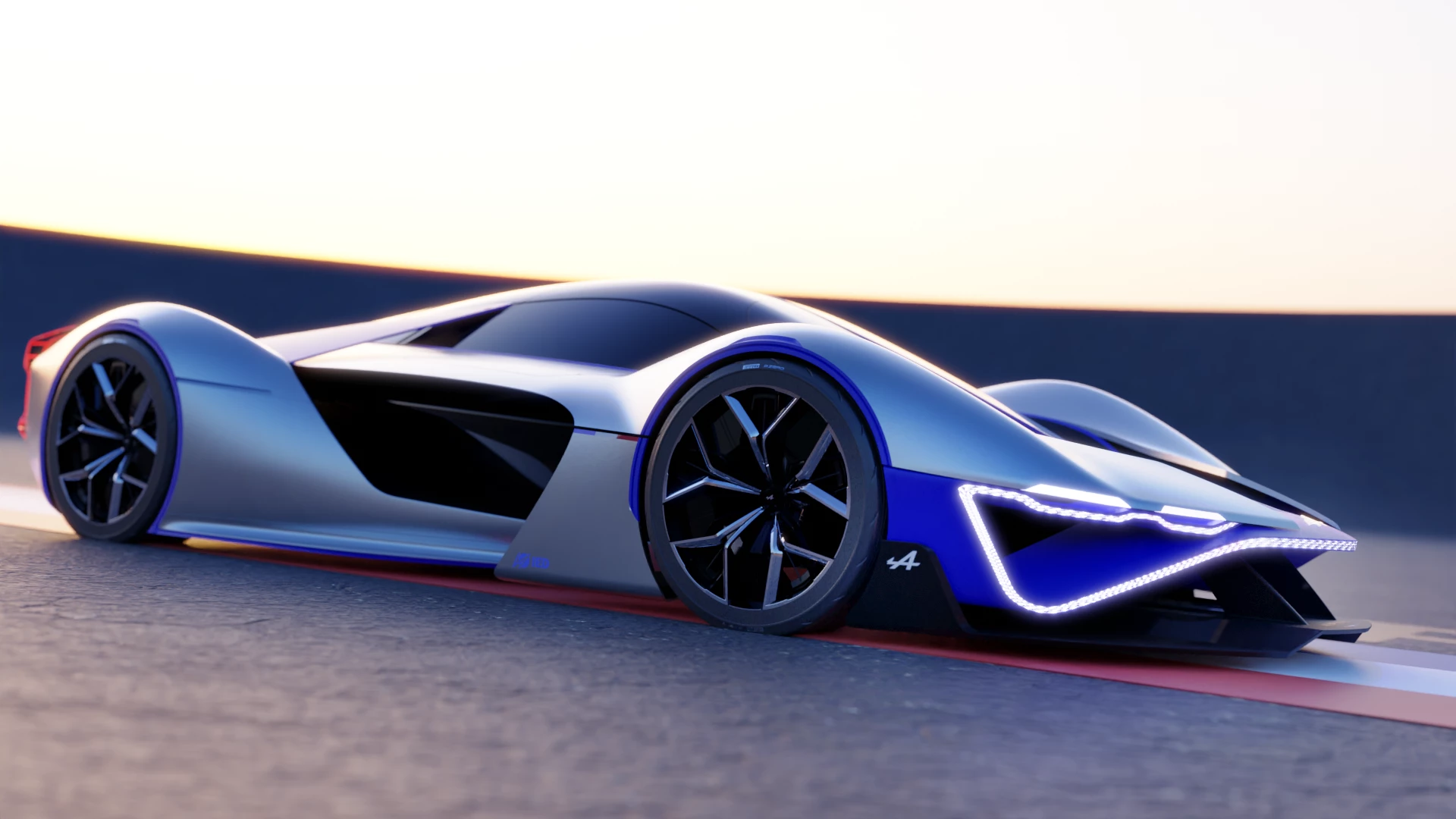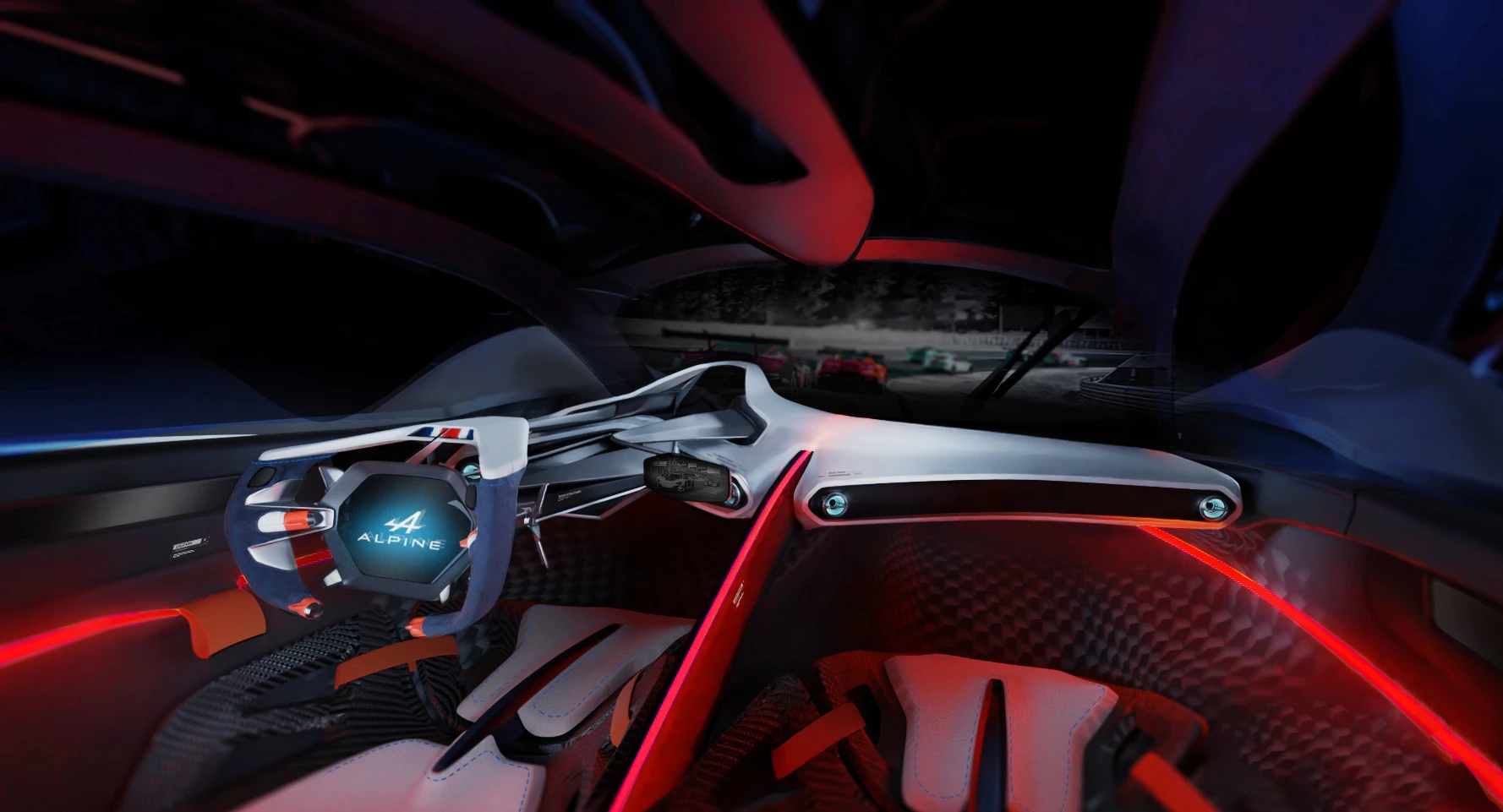A Geneva concept car even without a Geneva Motor Show, the Alpine A4810 is a look at an absolutely menacing supercar that runs on clean, water vapor-emitting hydrogen. Huge tires below even huger bodywork, a central canopy and a rear-end that looks like an intergalactic fighter jet combine to make it an absolutely futuristic vision for alternative-fuel supercar supremacy.
Some kids have all the fun. The A4810 is actually a graduate-level thesis project undertaken by 28 master's students at the Istituto Europeo di Design (IED) in Turin, Italy. Their formal instructions came through a collaboration with Renault's Alpine brand: "Interpret the design codes [of] the Alpine brand and transpose them into the future by designing the 'super berlinette' of 2035. The two-seater supercar will have to be as sporty as it is environmentally friendly. It will be hydrogen-powered and must embody the spirit of Alpine cars: lightness, sportiness, driving pleasure. You have five months!"
Frankly, between the huge front ducts, central glass canopy and blade-like components, the A4810 feels more like an interpretation of Techrules' (i.e. Giugiaro's) short-lived design codes, but we'll let IED professors and Alpine's design team worry about that. What is crystal clear is that these students absolutely went for the 'super berlinette of the future' theme with full abandon, creating a raw hunk of rolling bodywork and molecule-slicing aero components that embodies science fiction levels of speed and dynamics.
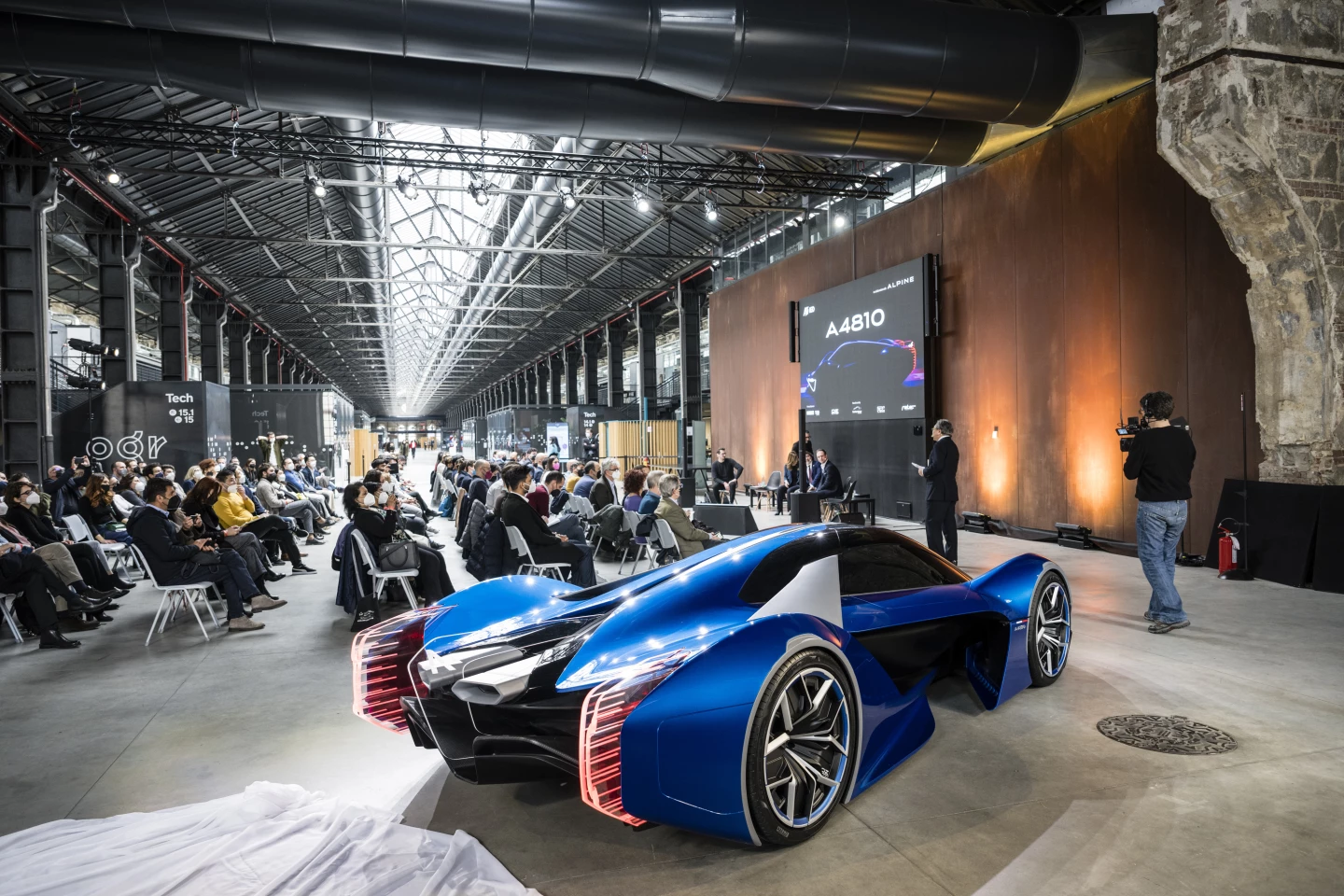
It's often difficult to begin analyzing a vehicle's styling from any other starting point than the front-end, but the A4810 makes it very easy. That rear-end simply demands to be stared at first, for more than a few seconds. We weren't trying to speak figuratively when we compared it to an intergalactic fighter jet, as we believe it could be ripped off and laser-welded to a fighter chassis from the next Star Wars, looking quite at home roaming deep space on the big screen. Those vertical taillight blades would fend off opponents with powerful lasers, leaving the long, centered tailpipes to deliver the deathblow of locked-in atomic space missiles.
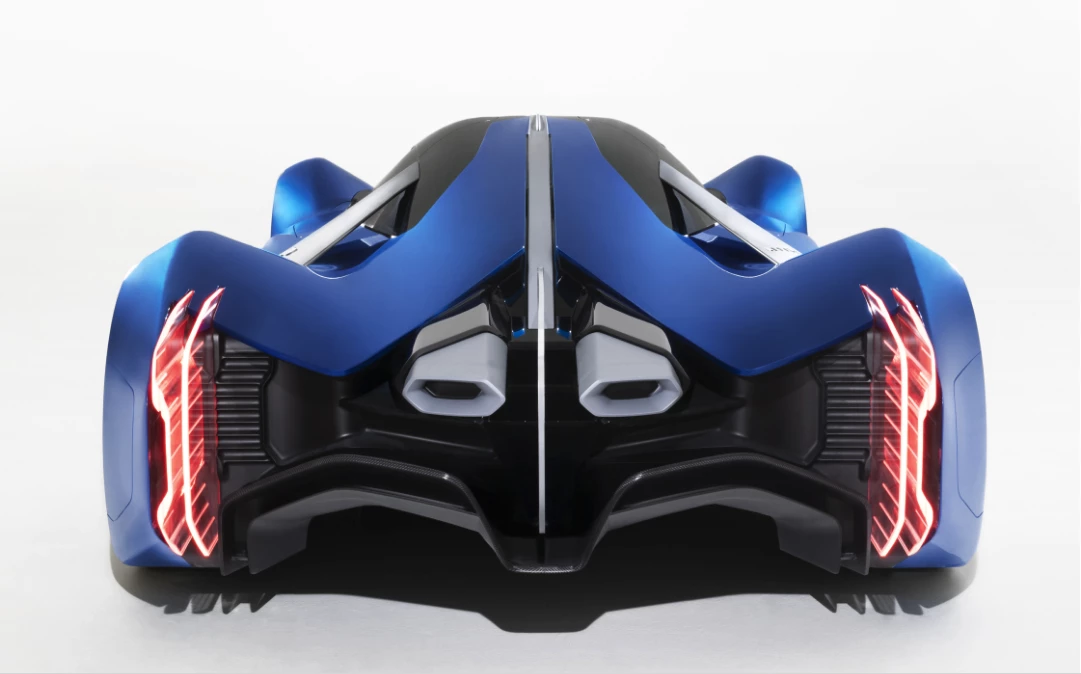
IED adds to the drama by triangulating the deep-blue rear bodywork, slicing a transparent fin right down the center, dropping the fenders down to just above the ground, and carving out a stacked diffuser. It's an absolutely vicious parting view that will hold onlookers' eyes in place well after it disappears past the horizon.
The Alpine A4810's sides are defined by an interplay between the voluminous fenders, structural bridge connecting them and empty space between the body panels, left open by the deletion of side doors. The front fenders rise highest, breaking dramatically down and swooping inward to hang the headlamp dashes that connect via a thin light strip wrapping fully around the ducts and nose, elements held up by a veritable tabletop of a splitter.

There's no mention of the specific powertrain layout or even whether it's a fuel cell electric drive or a hydrogen-fueled combustion engine. We'll go with the latter because Alpine references fuel tanks and an engine specifically but not a fuel cell stack. Plus, those huge tailpipes must be there for something. It's merely academic, anyway, since the A4810 is merely a motor-less life-size model.
For those wondering about the "4810" designation, it has nothing to do with Alpine's historical nameplates but references the elevation in meters of Mont Blanc, the highest peak of the Alps that straddles the border of France and Italy.
It's safe to say nothing like the A4810 will be showing up in Alpine lineup anytime ever, but it's certainly an intriguing piece of design work that progressed through to an impressive show car. Usually, IED and company would reveal this type of project at the Geneva Motor Show earlier in March, but with no show this year, they held the official unveiling on March 18 at the OGR Tech center in Turin. Photos from the event were released on Wednesday of this week.
Source: Alpine


